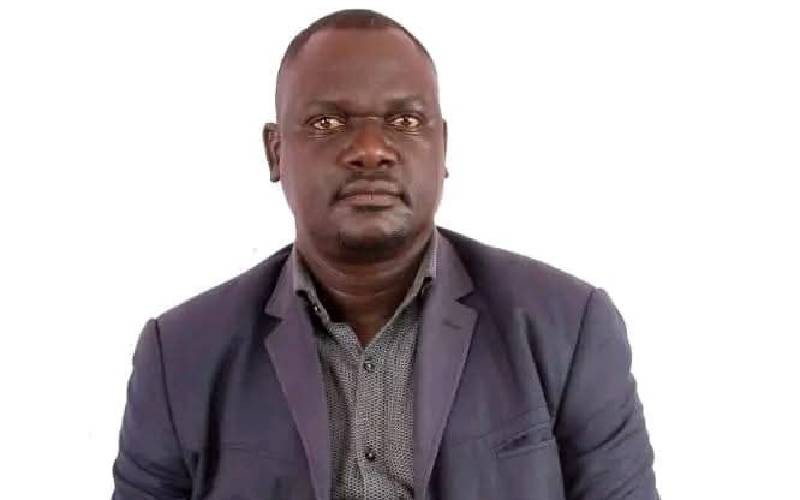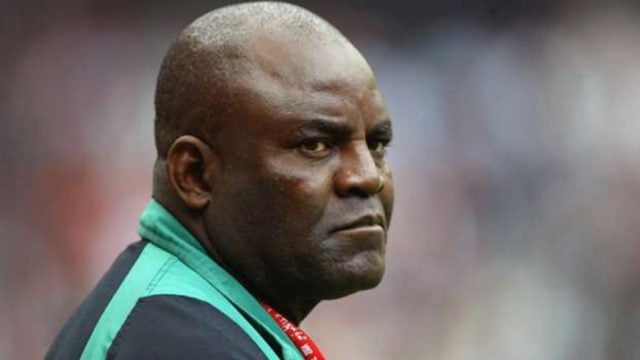Arts & Life

Thankful. Turning 80 is aspirational, not a goal. Those who, like me, attain 80—or whatever their milestone is—do so against the given uncertainty of when the final call would come. We all face, in varying degrees, unpredictable headwinds in life. Attaining this age is not by my design; I have Olodumare to thank for that. I feel gratified. I feel introspective. And nostalgic.
I remember with fondness growing up in Ikere, then a sleepy, bucolic town in Ekiti. It was a pretty beautiful environment to grow up in. People held tightly to the mantra of honour, honesty, education, and hard work. I remember actively participating in the major annual festivals of the town. I loved the jollity and revelry that came with the celebration of ògún òyè, an annualised aspect of the Olosunta festival, which gave everyone in town, kids, parents, and grandparents the licence to be vulgar and lewd for a limited period: to compose and perform songs lampooning the sexuality of the opposite sex. And, after three days, everything would come to a firm end definite end, with everyone tendering a final and public apology at the marketplace. Age has allowed me to be a participant-observer in the journey of life. Growing up in Ikere fundamentally shaped my relational attributes and work ethos. It incentivised me to aspire. It instilled in me the socio-cultural orientation that was so pivotal to my growth as an artist.
As an artist, I take the privilege of visual agency seriously. The issues that I addressed in my 2016 solo exhibition at Terra Kulture—the Chibok Girls imbroglio, Boko Haram, and Internally Displaced Persons among others—were indexical of my creative preference for topicality. This is living to the strength and creative bent of my profession. The artist is, ideally, the curator of his milieu: a socially conscientious perambulator who is at liberty to deploy the tools in his kit in responding to his or her creative inclinations. There is always a smorgasbord of ideas all pressing for aeration. My art is selfish; it is a declaration of my testaments. It is purgative. It is also cathartic. While some artists cosmetize their works, I seek to produce paintings that jolt and cajole simultaneously.
Since my last exhibition, I have shifted my gaze to the issues affecting the larger society where I am domiciled: racism, sexism, social injustice, prejudicial policing, political bigotry, incivility, and a rash of executive disorders with adverse local and global consequences. My recent body of thematized work deals with protestations, which were triggered by the murder of George Floyd by the cops on the streets of Minneapolis in Minnesota in broad daylight in 2020. Currently, I am fixated on non-figurative aesthetics: exploring the properties of color to create non-particularistic images that inspire hope.
The Music Festival you alluded to was one of the major activities I initiated when I became Director of the Center for Cultural Studies at Unilag in 1989. However, we did more than merely showcase the immense creativity that Nigerian artists draw upon. The Center for Cultural Studies had a standing performing arts troupe comprising seasoned, professional actors, dancers, and drummers. I led the 21-person strong troupe on tour of Jamaica with Bode Osanyin’s play, Orisa in 1990. The following year, we were on tour of Germany with Sheri Ajasin’s The Three Suitors. In November 1989, I was elected president of the Society of Nigerian Artists, SNA. We revamped the society, which was comatose at that time. We incorporated it as a legal entity and established viable state chapters, each with its executive. One of the critical achievements of my executive was the fight for the establishment of the National Gallery of Art as a parastatal. This entailed serious advocacy at the ministerial level, using the government’s cultural policy as the raison d’être. We took a full-page advert in the Sunday Times in 1990, addressed to the Babangida administration.
So, to come back to your question, I have been privileged to operate at various levels connected with the arts. Starting as Art Editor, art critic, and cartoonist at the Daily Times in the mid-70s, then moving to Unilag from where I left for Bloomington, Indiana, for my doctorate: I have expanded my creative and intellectual horizons with each phase of my professional and academic development. As teacher, art historian, painter, art critic, and curator, my experience encapsulates the totality of my sojourn. So, you can see that as we age, we become the warp and weft of our calling: at the creative, performative, and epistemological levels. That was probably the extensive sense in which Niyi Osundare’s assertion can be grasped.
What is the center, and what is the periphery in art? Time there was when that concept was hip. Not anymore. Some would argue that to the extent that important infrastructural and promotional facilities in the art world—gallery and museum spaces, biennales, critical grants, awards, residences, even pivotal journals—oscillate around Euro-American locales, the West is, a priori, the center. However, when you deconstruct the notion of the center in art, you’ll probably conclude that since creativity is not geographically-based, assigning a center or periphery to artists is one of those spurious imaginaries. It is a proclamation that purports to assign to the West that which the West cannot sustain, as all art is local.
What is needed by Africans in general is trenchant advocacy in the creative arts. We need to affirm and proclaim our own agency. We need to define ourselves with unqualified chutzpah. We need to fiercely assert ourselves and say our own names, literally and metaphorically. Because art is sold on the world stage does not give the location any exclusive power to arrogate to itself a center that is fictive. Take the art market in Nigeria, which is progressive and consistently buoyant. The gallery sub sector continues to thrive, as does patronage. Long before unemployment became routinized in Nigeria, contemporary artists were among the first group of college-educated professionals to embrace self-employment. And they have continued with this tradition. There is, of course, room for improvement. For example, Nigeria deserves a biennale that is commensurate with the caliber of artists that it has. And most certainly, the country needs a befitting edifice for its national gallery of art. At some point in the future, too, states will eventually arrive at that juncture where they realize the import of a gallery as an invaluable component of their assertion of cultural wealth and creative pride.
I would probably work with a writer and turn it into a syndicated strip, with standardized characters who have their personality traits and idiosyncrasies. There is a template for this in the highly successful work by the inimitable American cartoonist, Charles Schulz, who created Peanuts that grew to become a rousing success with Charlie Brown as a lead. Mine, Kole the Menace (or Kole Omole, i.e., the rascally kid) would cater to admittedly precocious children exclusively. They would be at liberty to rule the world; their fantasies would become the aspirations of Nigerian kids. They would celebrate our culture, and we would be, on occasions, at the receiving end of their criticism. The endgame would be to turn Kole the Menace into an animated series that would be streamed.
You will recall that I retired from Miami University (Oxford, Ohio, not the other Miami in Florida) in 2015. That was the second retirement that I was privileged to enjoy. The first occurred in 1992, from the University of Lagos after 15 years of service. Retiring from Miami University was the culmination of 22 years as an academic, first at Indiana State University in Terre Haute, where I clocked 12 years before moving to Miami University. As happens in most institutions in the U.S., there is no set retirement age. So, when I retired at 70, I did so to enjoy one of the most precious commodities: time. How sweet it was to wake up on my own time, without the pressure associated with work as professor, faculty advisor with committee assignments, community commitments, and other quotidian engagements!
So, retiring at Miami University set me a new routine, one that allowed me to focus on the things that I enjoy doing most: painting and writing. And that’s a routine that I’ve kept. In terms of my favored medium, it is acrylic. Until 2005, I was using oil and/or mixed media. But I made the decision to move away completely from oil-based medium because of the health hazards associated with fumes and related mediums such as turpentine. I switched to water-based mediums such as latex and acrylic, which have qualities and properties comparable to oil.
Life is transitional. We are all but privileged fugitives. No one stays forever. Immortality is possible but only through one’s deeds, good or bad. Life is full of undulations. We experience the sensations of achievements and the sting that is a consequence of a tragedy, some more devastating than others. We live in a world of complementarities. This is what provides our equilibrium.
Professionally and academically, I have been as successful as any who has been. I graduated top of my class in Zaria—with First Class. I won three of the department’s five prizes. I was Fulbright scholar at Spelman College, Atlanta, and became professor and chair at two institutions in the U.S. where I knew absolutely no one. These are just a few of the moments of thrill. I have been blessed with the most incomparable partner in this journey. My wife, Joke, has been my constant star and support for fifty years. I am grateful for my loving children and the successes they too have racked up in this country. My low moments pale in comparison to these highlights not because they did not traumatize me but because, in principle, I have learned not to dwell on them. But the one single sting that continues to tug at my heart regularly was the sudden death of our son, Ayo, in 2011.
He came home on the fall semester break from his law studies at Chicago School of Law where he had but one semester left to graduate. He slept. He never woke up. He was healthy, happy, and had no signs of stress. He died of artherosclerosis. We continue to honor his memory by instituting an endowment at his alma mater, Indiana University, so scholarships are offered annually to students in his name. At International School, Unilag, we ran for a decade an annual essay contest for students, with respectable awards for winners. And last year, we endowed the Ayodele Jegede Scholarship in the Department of Political Science at Unilag.
Since relocating to US, what did you miss about Lagos and Nigeria?
My oh my! I miss the character and personality of the city: the whole shebang! What wouldn’t one miss: the rough and tumble of driving; the creativity of bus conductors; the audacity of the area boys; the rapaciousness of landlords; yellow fever nko? What wouldn’t one miss: the fashion industry and a renascent film industry; omo ologi on campus on Sunday mornings; NEPA; the rainy season in Lagos; Eyo; my professional association and colleagues; and, ah! mosquitoes! The music scene has changed as has the attitude of our youths; new fads and mannerisms have emerged with the advent of technology with everyone being a content producer (e bami shia e); banking has been democratized and I have had to learn new acronyms. As you can see, the list of what I miss about Las Gidi is innumerable. What better note to end this on than join the chorus, Èkó ò ní bàje o!






